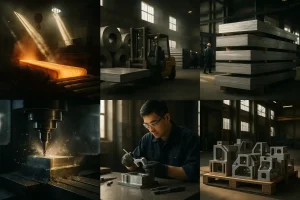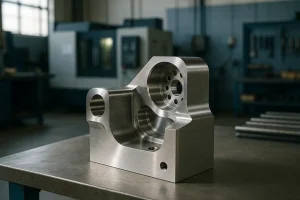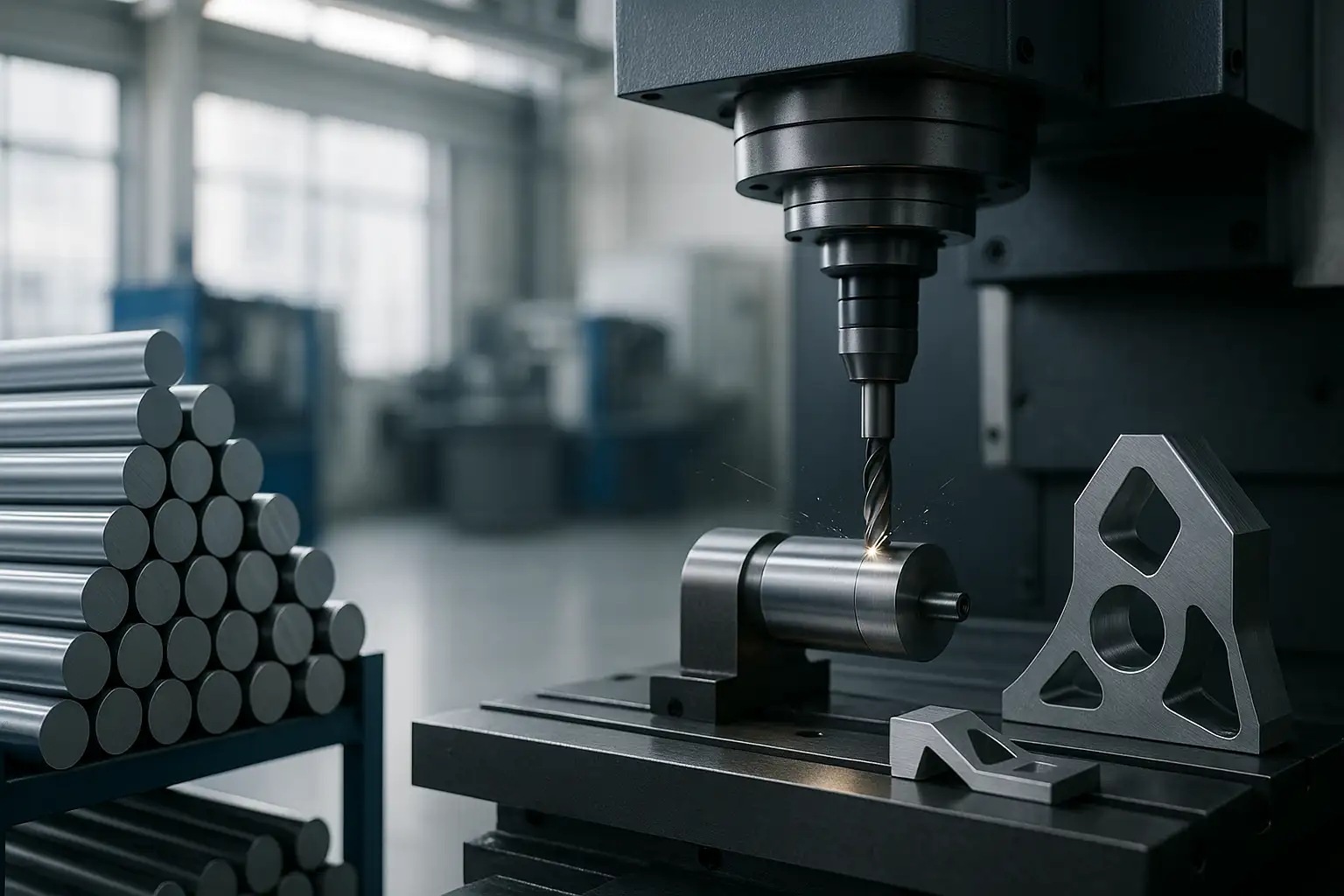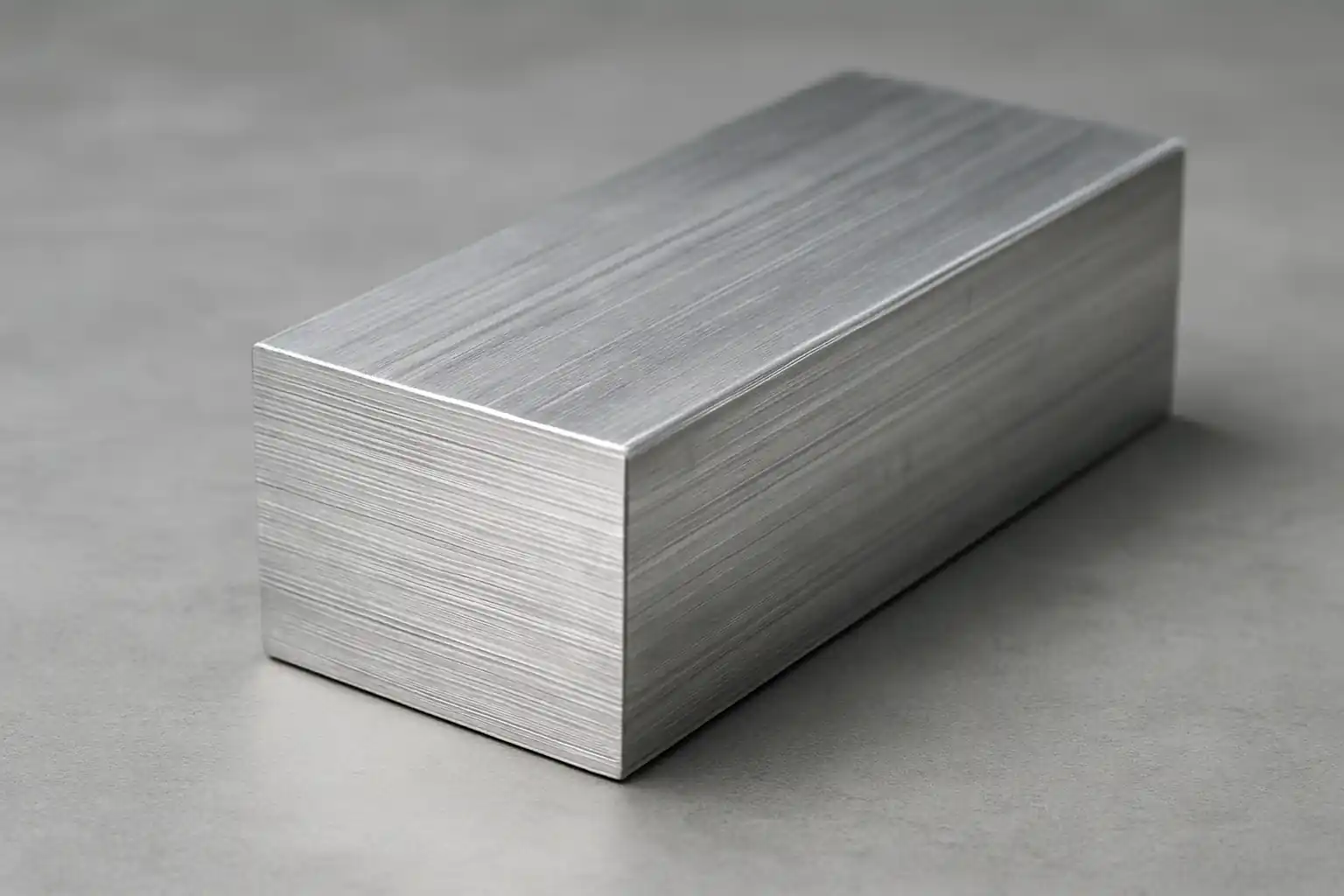Stainless steel is one of the most widely used metallic materials in modern industry and daily life, renowned for its excellent corrosion resistance, superior strength, and aesthetic appeal. From large-scale chemical equipment and precise medical instruments to everyday cutlery and kitchenware, stainless steel plays an indispensable role due to its unique alloy formulation and diverse performance characteristics. A comprehensive and professional analysis of stainless steel is presented below.
What is Stainless Steel?
Stainless steel is an iron-based alloy that contains a high proportion of chromium (a minimum of 10.5%). The chromium element is the key to its distinctive corrosion resistance, as it rapidly forms a very thin, dense, and stable chromium-rich oxide layer, known as the passive film, on the steel surface. It is this film that effectively isolates the steel substrate from corrosive media, granting stainless steel its excellent anti-rust capabilities.
Composition of Stainless Steel
The main constituent elements of stainless steel include Iron (Fe) and Chromium (Cr). To achieve specific performance requirements, other critical alloying elements are added in varying proportions:
-
Nickel (Ni): Forms and stabilizes the austenitic structure, significantly enhancing ductility, toughness, and corrosion resistance, which is especially crucial for performance in acidic environments.
-
Molybdenum (Mo): Primarily used to enhance resistance to pitting and crevice corrosion, making it a critical alloying element for corrosion resistance in chloride environments.
-
Manganese (Mn) and Nitrogen (N): Both serve as austenite stabilizers, with nitrogen also significantly boosting the steel’s strength through solid solution strengthening.
-
Carbon (C): Increases strength and hardness, but its content must be strictly controlled, as high levels can compromise corrosion resistance, particularly near weld zones.
Manufacturing Process of Stainless Steel
The production of stainless steel is a multi-step, highly controlled and precise process, with each stage critical to the final product’s quality:

Overview of stainless steel production and machining workflow inside a modern factory.
Melting and Refining
Production begins with Melting, where raw materials (iron, ferrochrome, nickel, etc.) are combined in an electric arc furnace or converter according to precise formulas. This is followed by Refining using processes like AOD (Argon Oxygen Decarburization) or VOD (Vacuum Oxygen Decarburization) to accurately control the carbon content and remove impurities, ensuring the final chemical composition meets standards.
Casting and Rolling
The refined molten steel then moves into the Casting phase to form semi-finished products such as slabs or billets. These semi-finished forms subsequently undergo a Rolling process (either hot-rolled or cold-rolled) to shape them into the required dimensions for plates, bars, wires, or tubes.
Heat Treatment and Surface Finishing
The material must be subjected to Heat Treatment (Annealing) to relieve internal stress, restore or refine the crystalline structure, and thus optimize its mechanical and corrosion properties. Finally, Pickling and Surface Finishing remove surface scale and achieve the precise finish required by the customer.
Types of Stainless Steel
Stainless steel is primarily categorized into five distinct groups based on its microstructural arrangement, which dictates its core properties and primary applications:
Austenitic Stainless Steel
This is the most produced and widely utilized class of stainless steel. Its microstructure is face-centered cubic, characterized by non-magnetic properties, excellent ductility and toughness, and superior corrosion resistance in diverse environments. They are typically not hardenable by heat treatment, but can be strengthened through cold working.
Ferritic Stainless Steel
Ferritic steels have a body-centered cubic crystalline structure and a higher chromium content. They are magnetic, relatively lower in cost, and exhibit good oxidation and stress corrosion resistance, though their strength and low-temperature toughness are generally inferior to austenitic steels, and weldability is moderate.
Martensitic Stainless Steel
Martensitic steels can be hardened through heat treatment (quenching and tempering), resulting in high strength and high hardness, often at the expense of some corrosion resistance and ductility. They are commonly used for tools and high-strength structural parts.
Duplex Stainless Steel
The microstructure of this steel consists of roughly equal proportions of ferrite and austenite. This unique combination grants them high strength, excellent resistance to stress corrosion cracking, and superior localized corrosion resistance, making them ideal for marine and chemical applications.
Precipitation Hardening (PH) Stainless Steel
Strengthened via a special aging (precipitation hardening) treatment, this steel can achieve extremely high strength levels while maintaining good corrosion resistance, frequently used in aerospace and nuclear industries.
Stainless Steel Grades
Stainless steel grades are standardized codes indicating their chemical composition and performance characteristics. The following table details common grades, primarily referenced under the AISI/ASTM (American Iron and Steel Institute/American Society for Testing and Materials) system, along with their value proposition:
| Grade | Type | Key Characteristics | Primary Uses | Selection Value |
| 304 | Austenitic | Excellent corrosion resistance, good formability, common standard grade. | Food equipment, cutlery, architectural decoration. | Universal Benchmark: Best balance of cost and performance for general use. |
| 304L | Austenitic | Low-carbon version of 304, prevents intergranular corrosion after welding. | Piping, large welded vessels. | Weld Integrity: Essential for preserving corrosion resistance in welded structures. |
| 316 | Austenitic | Molybdenum-bearing, higher resistance to corrosion, especially chlorides. | Marine environments, chemical processing. | Marine Standard: Required for chloride-rich and moderately corrosive environments. |
| 316L | Austenitic | Low-carbon version of 316, enhances welding safety. | Medical devices, pharmaceutical equipment. | Critical Hygiene: Standard for applications demanding maximum cleanliness and weldability. |
| 430 | Ferritic | General-purpose, magnetic, moderate cost. | Household appliances, decorative trim, automotive decoration. | Cost Efficiency: Lowest cost option for non-critical, aesthetic applications. |
| 409 | Ferritic | Low-cost grade. | Automotive exhaust systems, structural components. | High Temperature/Low Cost: Good thermal properties for non-appearance auto parts. |
| 410 | Martensitic | Basic grade, high strength, heat-treatable. | General mechanical parts, fasteners. | Versatile Strength: Balance of strength, wear resistance, and mild corrosion resistance. |
| 420 | Martensitic | Higher-carbon content, high hardness. | Knives, scissors, surgical instruments. | Cutting Edge: Chosen when maximum hardness and edge retention are paramount. |
| 2205 (S32205/S31803) | Duplex | Most widely used duplex steel, high strength, excellent stress corrosion resistance. | Oil & gas and chemical industries. | Strength + Corrosion: Superior strength-to-weight ratio and LCC (Life-Cycle Cost) in demanding conditions. |
| 2507 (S32750) | Super Duplex | Extremely high strength, superior resistance for harsh conditions. | Extremely corrosive marine and acidic environments. | Extreme Performance: Reserve choice for the most severe, high-chloride applications. |
| 17-4PH (S17400) | PH | Achieves extremely high strength through aging. | Aerospace, pump shafts. | Maximum Strength: Chosen when structural integrity at high stress is critical. |
| 904L | Super Austenitic | Very high Nickel and Molybdenum content. | Strong acids and highly corrosive media environments. | Acid Resistance: Specialty grade for resisting highly aggressive reducing acids. |
Characteristics of Stainless Steel
The core value and external advantages of stainless steel are primarily reflected in its characteristics:
Corrosion Resistance
The primary advantage of stainless steel. Its outstanding corrosion resistance allows it to withstand attack from various environments, moisture, and chemical media, a benefit derived from the stable, chromium-rich oxide film on its surface.
Sanitary Properties and Aesthetics
It possesses excellent Sanitary Properties—its smooth, non-porous surface is easy to clean and meets stringent food and medical standards. Concurrently, its inherent metallic Aesthetics and easy surface treatability make it widely used in decorative applications.
Performance of Stainless Steel
The physical structure and mechanical behavior of stainless steel are predominantly expressed in its performance aspects. The table below provides key values for three representative stainless steel grades:
| Performance Metric | Austenitic (304) | Ferritic (430) | Duplex (2205) |
| Tensile Strength (MPa) | Approx. 515 – 620 | Approx. 450 – 630 | Approx. 800 – 950 |
| Yield Strength (MPa) | Approx. 205 – 240 | Approx. 205 – 300 | Approx. 550 |
| Density (g/cm³) | 7.93 | 7.70 | 7.80 |
| Thermal Conductivity (W/m·K) | Approx. 16.2 (20°C) | Approx. 26.1 (20°C) | Approx. 19.5 (20°C) |
| Magnetic | Non-magnetic/Weakly Magnetic | Ferromagnetic | Ferromagnetic |
Mechanical Performance
Stainless steel demonstrates robust Mechanical Performance, including high strength (as shown above) and hardness, coupled with excellent ductility and toughness, making it suitable for structural applications subject to load and complex forming.
Physical Performance
Regarding its Physical Performance, stainless steel typically has a low thermal conductivity (beneficial for high-temperature or insulation applications). Its magnetic behavior varies by type: austenitic grades are non-magnetic, while ferritic and martensitic grades are ferromagnetic. Furthermore, the material exhibits good high-temperature oxidation resistance.
Applications of Stainless Steel

$\text{The journey of stainless steel: from raw material bars to precision components through advanced CNC technology.}$
Architecture and Decoration
Stainless steel is highly valued in the construction industry for its strength, corrosion resistance, and modern aesthetic appeal. It is widely used in curtain walls, elevator cabs, and as indoor and outdoor structural components like railings and trim. Its durability ensures long service life with minimal maintenance, making it a sustainable choice for landmark buildings and public spaces.
Food and Medical Industries
The hygiene and non-reactive properties of stainless steel make it essential for these sensitive sectors. It is the material of choice for food processing equipment, large storage tanks, and preparation surfaces, as it does not contaminate the contents. In the medical field, its sterility and ease of cleaning are vital for surgical instruments, hospital equipment, and permanent body implants.
Chemical and Energy Sectors
In environments characterized by high pressure, extreme temperatures, and corrosive chemicals, stainless steel provides the necessary resilience. Specific grades are indispensable for manufacturing reactors, complex piping systems, and heat exchangers. Its ability to resist chemical attack ensures operational safety and prevents system failure in demanding oil, gas, and chemical processing facilities.
Transportation
Stainless steel contributes to safety and longevity across various modes of transport. Its strength and heat resistance are crucial for automotive exhaust systems and catalytic converters. It is also used for constructing durable shipping containers and as structural components of rail vehicles (such as subway and train cars) due to its impact resistance and low maintenance requirements.
Consumer Goods and Household Use
In everyday life, stainless steel is prized for its durability and aesthetic finish. It is the standard material for cutlery, high-end kitchenware, and major household appliances (refrigerators, dishwashers). Its resistance to staining and rust ensures products remain functional and attractive over time.
Conclusion
By virtue of its unique alloy design, excellent corrosion resistance, and superior integrated mechanical and physical properties, stainless steel provides irreplaceable value in demanding environments and high-hygiene applications, making it a critical material for advancing modern industry and improving quality of life.
Ready to optimize your project? Contact our materials specialists today to select the ideal, customized stainless steel solution for your high-demand application.



